Sustainable Innovation in Modern Construction
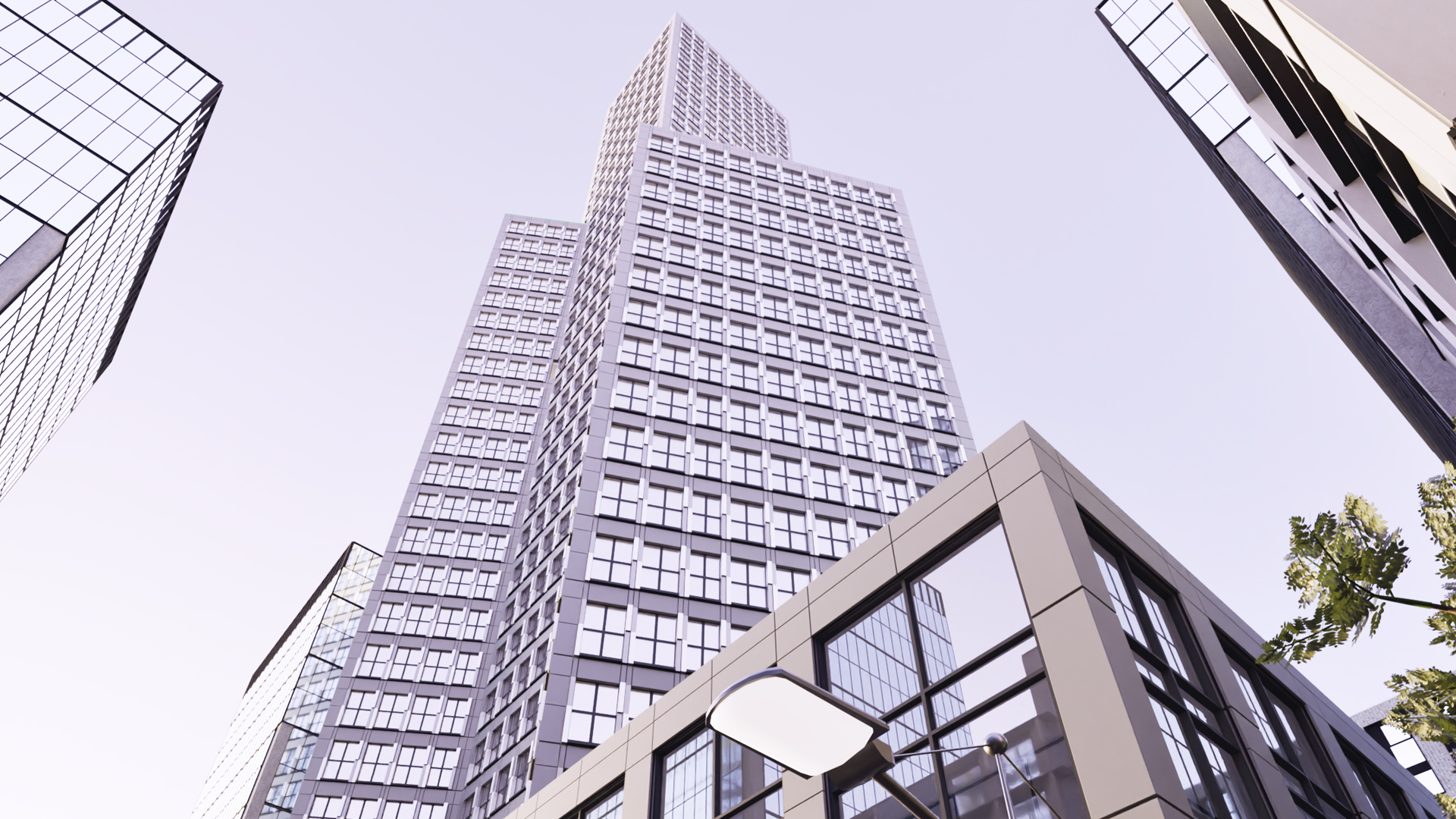
Modern construction is entering a new phase where technology and sustainability go hand in hand. With growing attention to environmental impact, energy efficiency, and resource optimization, the industry is rethinking how buildings are designed and built. Prefabricated solutions, supported by digital planning tools, allow for faster and more precise implementation while reducing waste and emissions.
This shift reflects a broader commitment to creating buildings that serve both people and the planet—structures that meet today’s practical needs while supporting long-term ecological goals. By combining innovation with responsibility, modern construction is setting new standards for quality, performance, and environmental stewardship, shaping the foundation of sustainable urban development.
Ecology and Production Efficiency
Environmental responsibility is a core component of successful modern projects. Prefabricated facade systems not only accelerate the delivery of architectural solutions but also substantially reduce environmental impact. Producing panels at regional facilities under strict quality control cuts construction waste, while optimized logistics—guided by data-informed planning—helps lower transportation emissions.
Digital methods support efficient production and supply planning, making processes more sustainable without interfering with creative or managerial decisions. The result is a reduced overall carbon footprint and operational emissions, alongside faster delivery and higher quality.
Reducing Emissions and Optimizing Resources
Producing prefabricated facades at regional facilities cuts waste and strengthens control over the manufacturing process. This approach reduces carbon emissions by up to 43% compared to traditional methods, while operational emissions drop by 22%.
A decisive factor is logistics optimization: planning tools identify the most efficient ways to package and deliver facade panels, reducing transport operations and minimizing environmental impact.
Key advantages include:
- Lower construction waste through precise manufacturing.
- Use of recycled and environmentally safe materials.
- Lower operational energy use through higher-performance building envelopes.
- Optimized transport routes and packaging.
Together, production and logistics optimization make construction not only fast and accurate but also environmentally responsible.
Compliance with Current Environmental Standards
Major cities demand not only high-quality buildings but also strict compliance with environmental norms—from energy efficiency to emissions control during both construction and operation.
In New York City, Local Law 97 (LL97) sets rigorous expectations for reducing buildings’ carbon footprints and limiting greenhouse-gas emissions, requiring modern eco-friendly technologies, materials, and transparent documentation.
Dextall delivers solutions designed to align with these requirements: its facade systems help minimize environmental impact and foster safe, comfortable urban environments while supporting sustainability goals. By reducing the need for frequent repairs and excess energy use, these systems extend building service life and further lower lifecycle impact.
Adopting such standards and technologies is a critical step for urban development—addressing today’s challenges and improving living conditions for years to come.
Environmental Priorities in Facade Construction
Modern cities focus on lowering carbon footprints and using resources more efficiently. Prefabrication and regional manufacturing of facades help reduce waste, cut transportation-related emissions, and improve building-envelope efficiency. Approaches aligned with current regulations—such as NYC’s LL97—support long-term performance and contribute to sustainable urban development.
Resource Transparency and Waste Reduction
Environmental transparency is achieved through clear planning of material flows and real-time tracking of sustainability indicators (waste volumes, recycled content, transportation footprint). Standardized facade solutions combined with optimized logistics reduce shipments and packaging steps, lowering environmental impact.
Key advantages include:
- Transparent accounting of materials and waste from project start.
- Rationalized delivery and storage with a focus on emissions reduction.
- Standardized system components that curb rework and excess resources.
- Adherence to safety and environmental requirements across the lifecycle.
As a result, projects gain environmental efficiency and predictability without deviating from sustainability goals.
Sustainability in Practice
Built projects show that standardized facade systems and regional prefabrication strengthen environmental performance without sacrificing design quality. In practice, this means:
- Less on-site waste through precise manufacturing.
- Optimized logistics with a lower transportation footprint.
- Stable thermal performance and airtightness of the building envelope.
- Readiness to comply with local environmental regulations (e.g., LL97).
A systematic sustainability approach turns innovation into measurable outcomes across the building’s lifecycle.
Intelligent Solutions for Lowering Environmental Impact
Today’s urban construction challenges call for approaches that make processes resource-efficient and transparent in sustainability terms—from tracking material flows and cutting waste to improving envelope efficiency and meeting environmental regulations. Digital planning tools and regional prefabrication align design and manufacturing stages, reducing transportation footprints and stabilizing quality.
This approach enables companies to deliver innovative projects with a smaller carbon footprint while supporting material circularity and long-term durability.
Combining digital tools with advanced manufacturing methods is a key success factor that raises environmental performance and reliability across the building lifecycle.
Environmental Sustainability Support (FAQ)
How does Dextall Studio help lower environmental impact?
Through prefabrication, waste reduction, use of recycled materials, and optimized logistics that cut transportation-related emissions.
Are the solutions aligned with environmental regulations?
Yes. The approaches align with current requirements, including New York City’s Local Law 97 (LL97).
How does this affect building energy performance?
Improved envelope efficiency (thermal performance and airtightness) helps reduce operational energy use.
What is the role of data transparency?
Tracking sustainability indicators—material flows, waste, and transportation footprint—supports informed decisions across the project lifecycle.
What is the lifecycle impact?
Lower carbon footprint over the service life, fewer interventions, and increased durability of facade systems.
Project Case — The Heritage (NYC)
Location: 1660 Madison Ave, East Harlem, NYC — part of a three-building, ~600-unit complex.
Scope: Occupied retrofit using Dextall’s prefabricated facade system (D-Wall 1500 in a hybrid approach with EIFS), replacing aging envelope and legacy heating/AC equipment.
Program & Support: Project advanced under the Empire State Building Challenge/NYSERDA initiative.
Key sustainability upgrades:
- Envelope modernization to cut heat loss and improve airtightness; designed for occupied installation to minimize tenant disruption.
- Integration of cold-climate packaged terminal heat pump (PTAC) units, displacing baseboard resistance heat and through-wall AC for lower energy use and operating costs.
- Regional prefabrication and planned logistics to reduce site waste and transportation impacts.

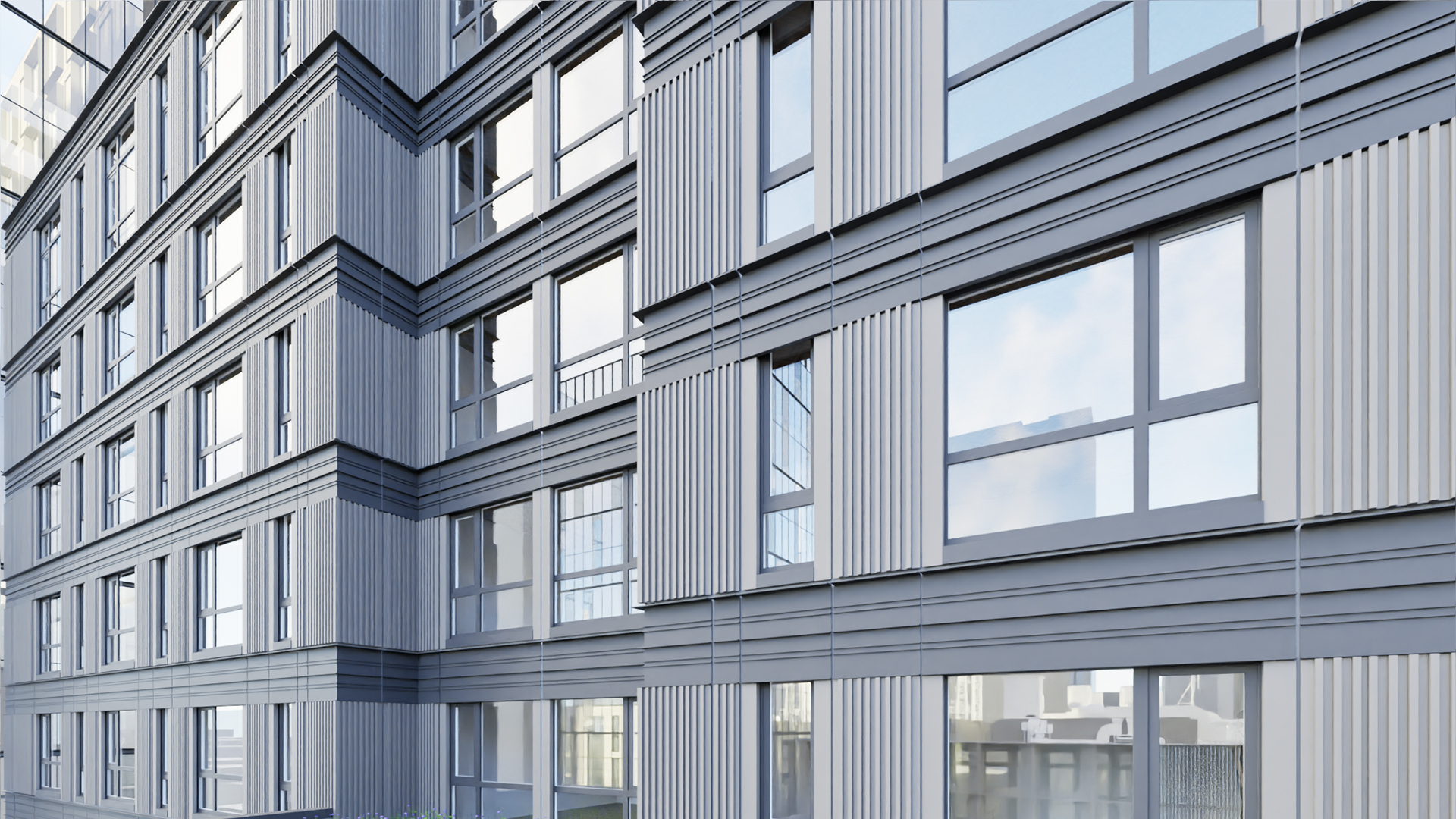
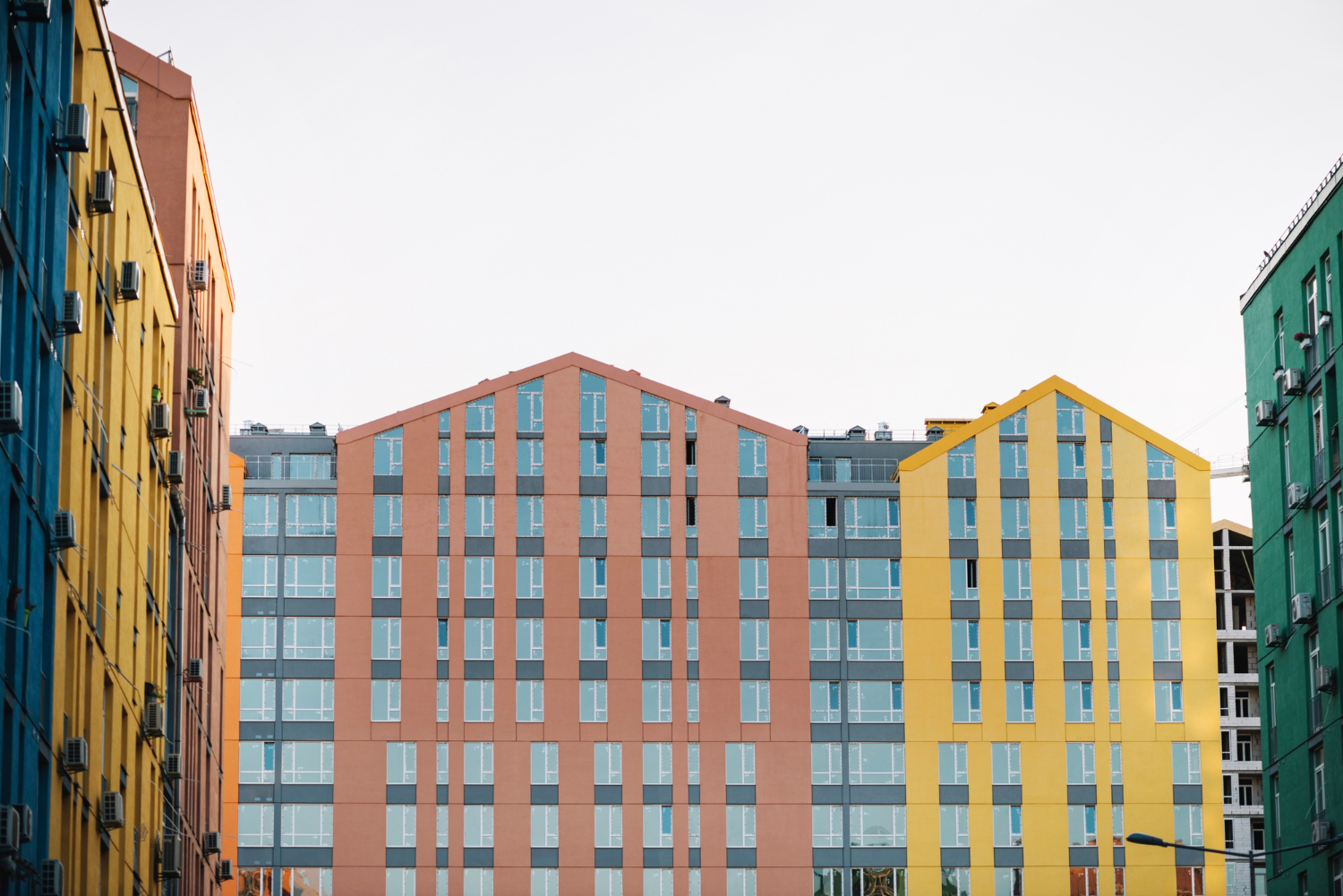


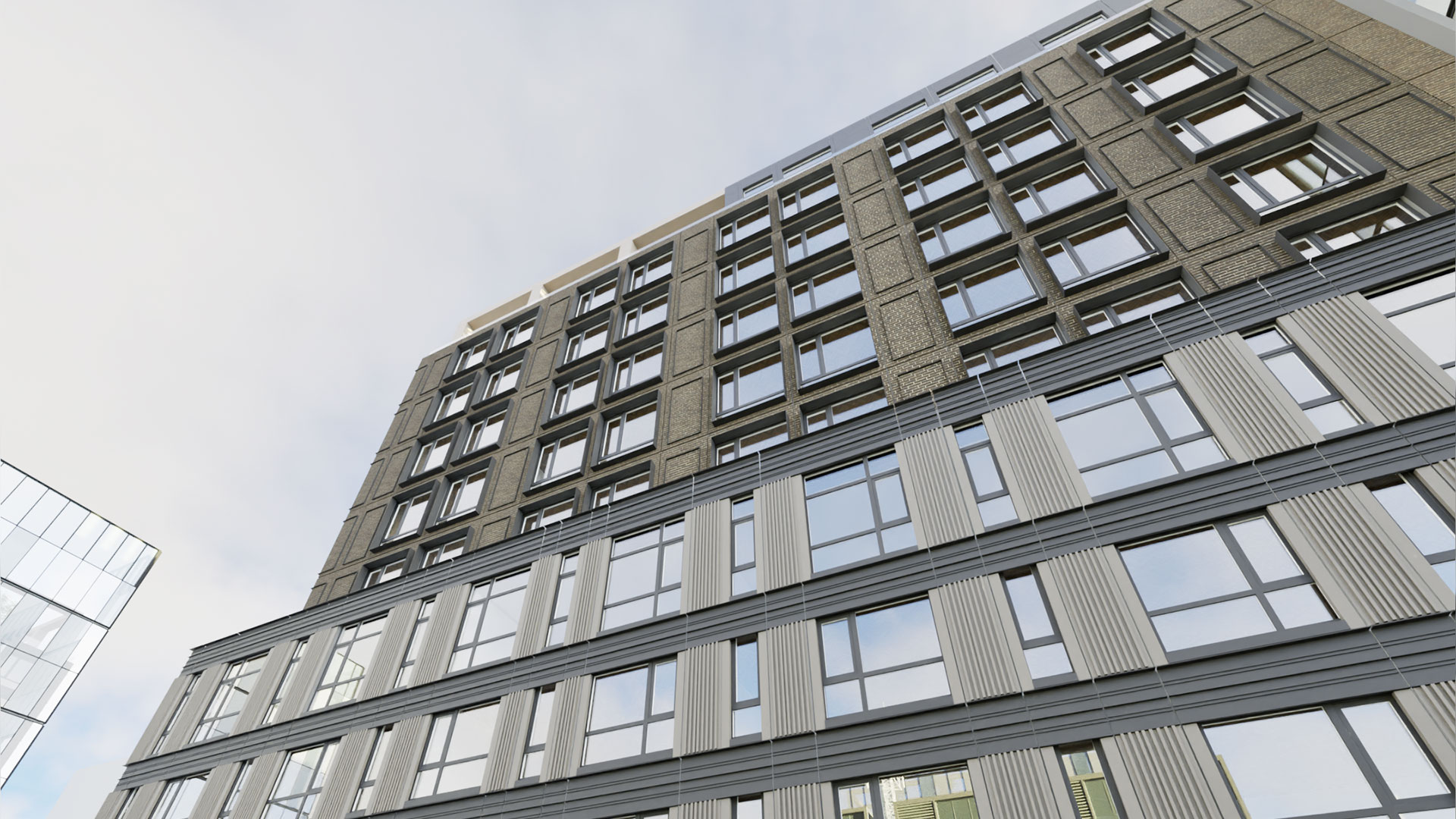
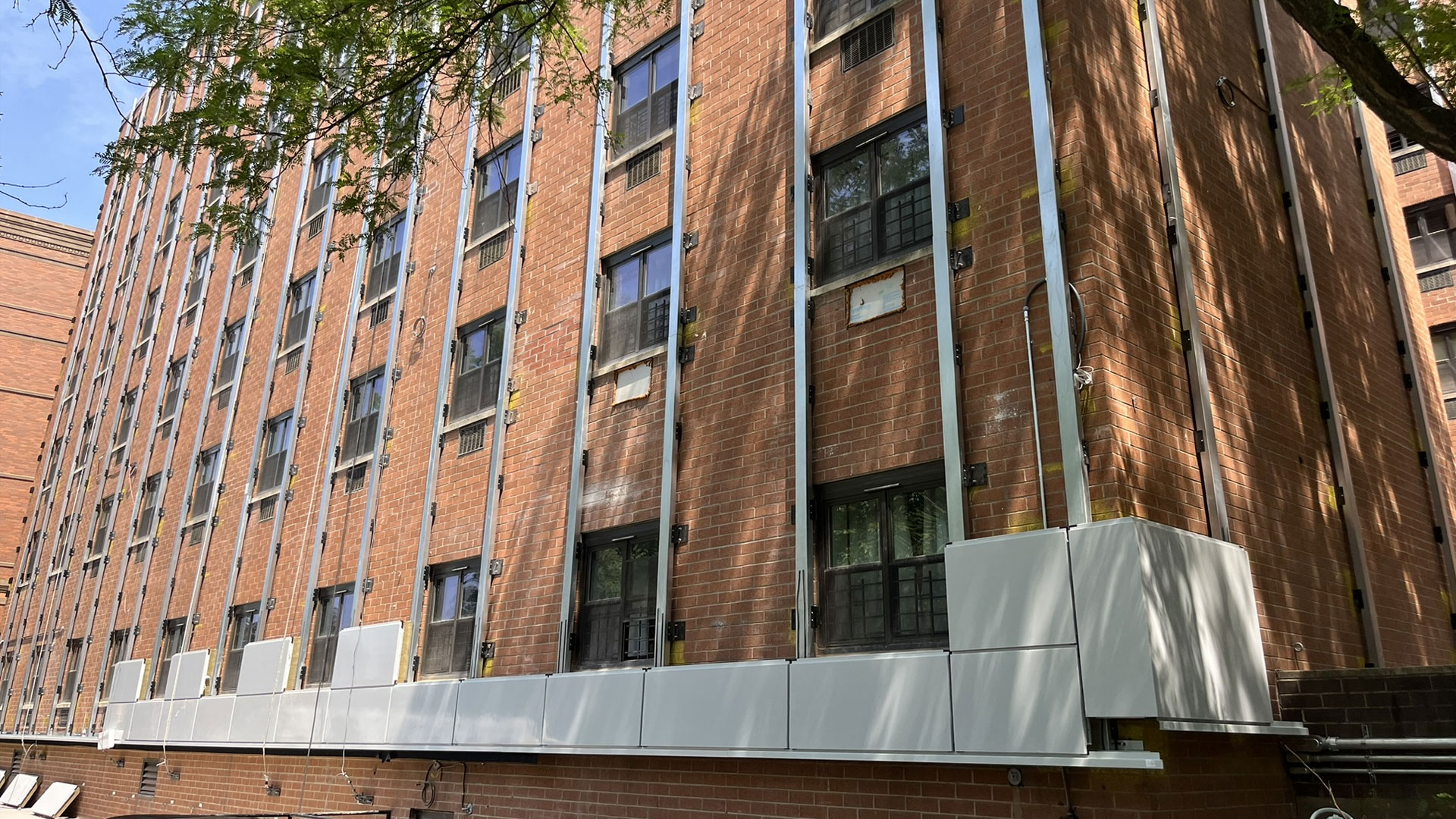
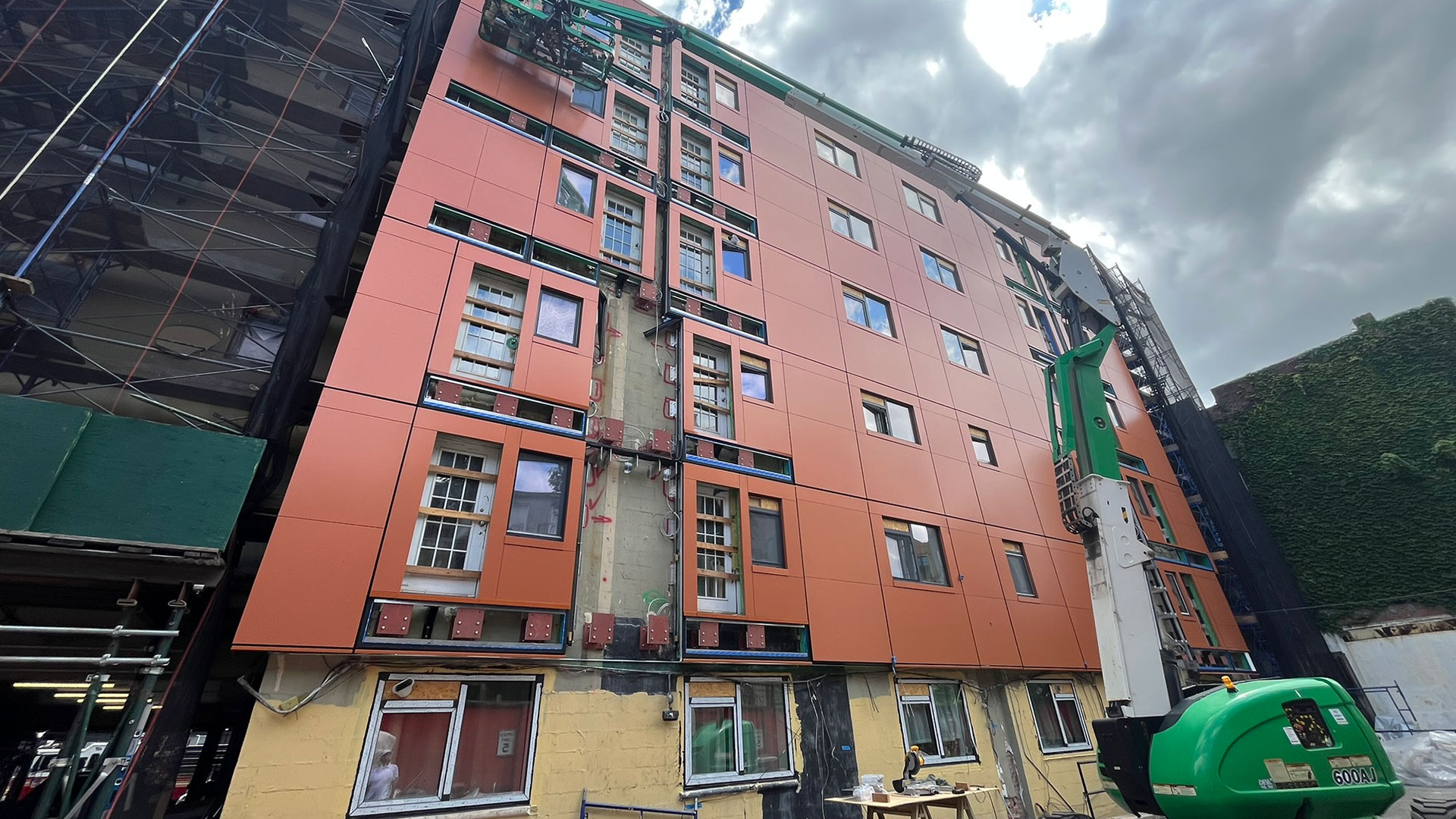
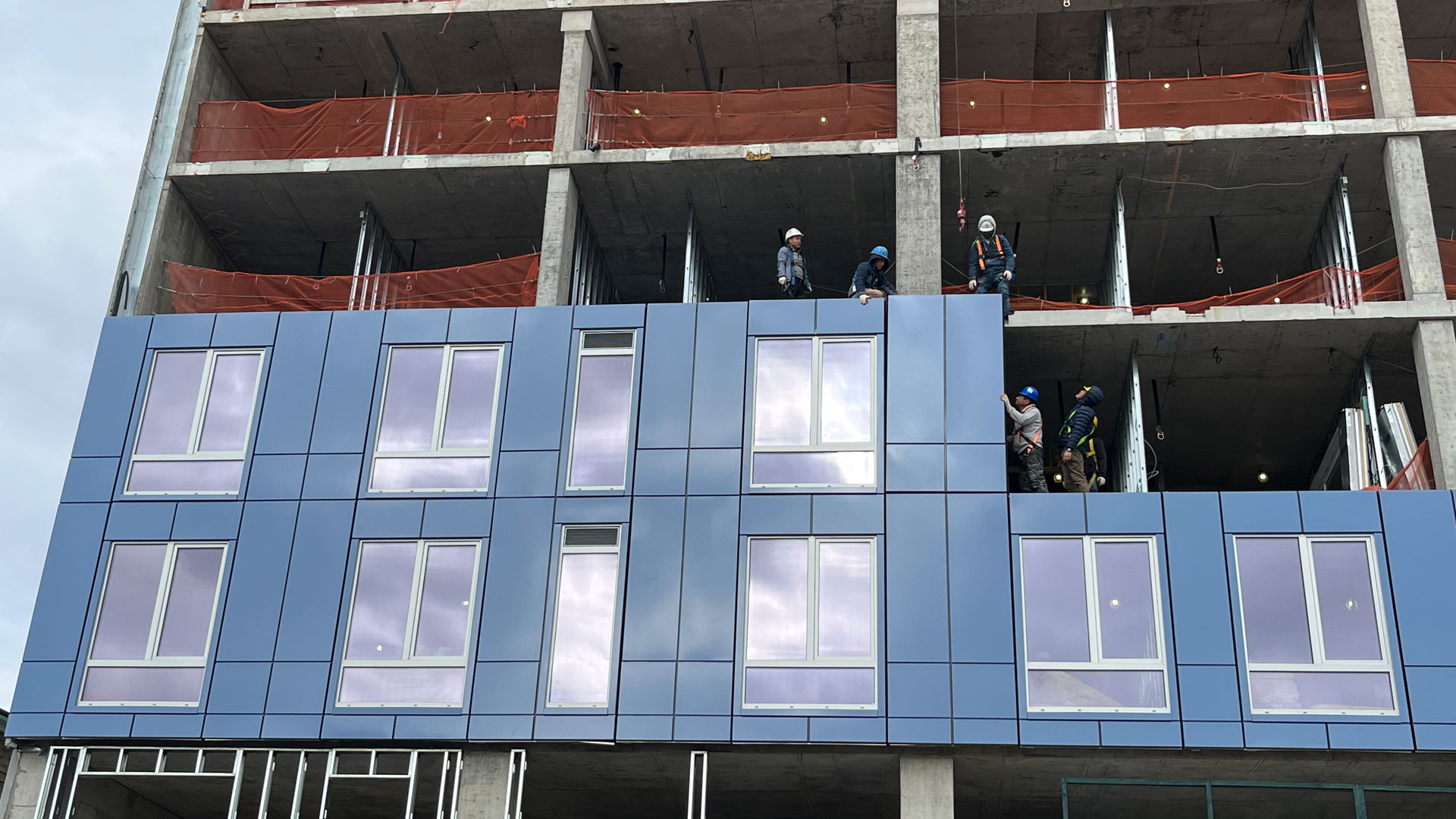
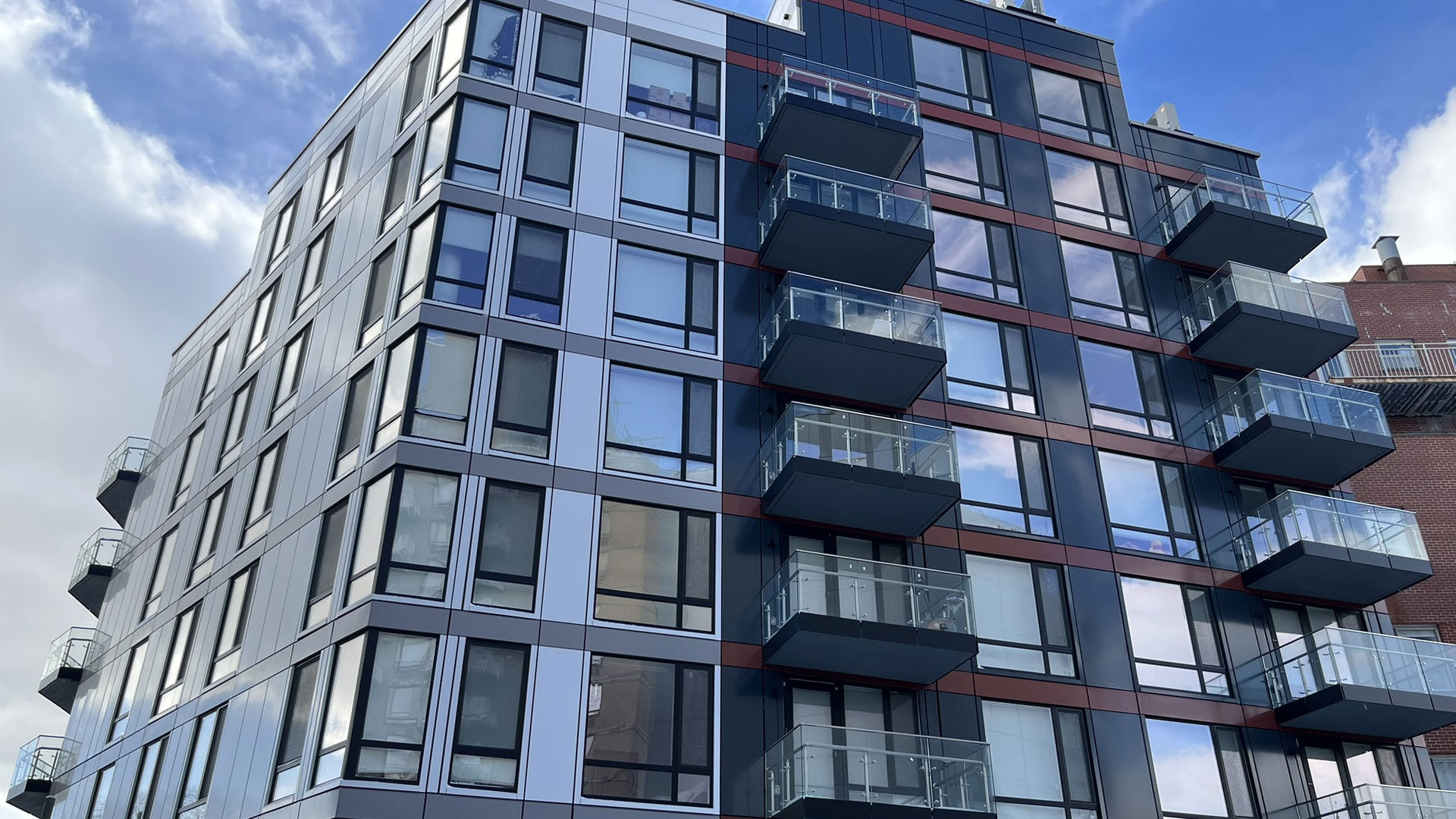
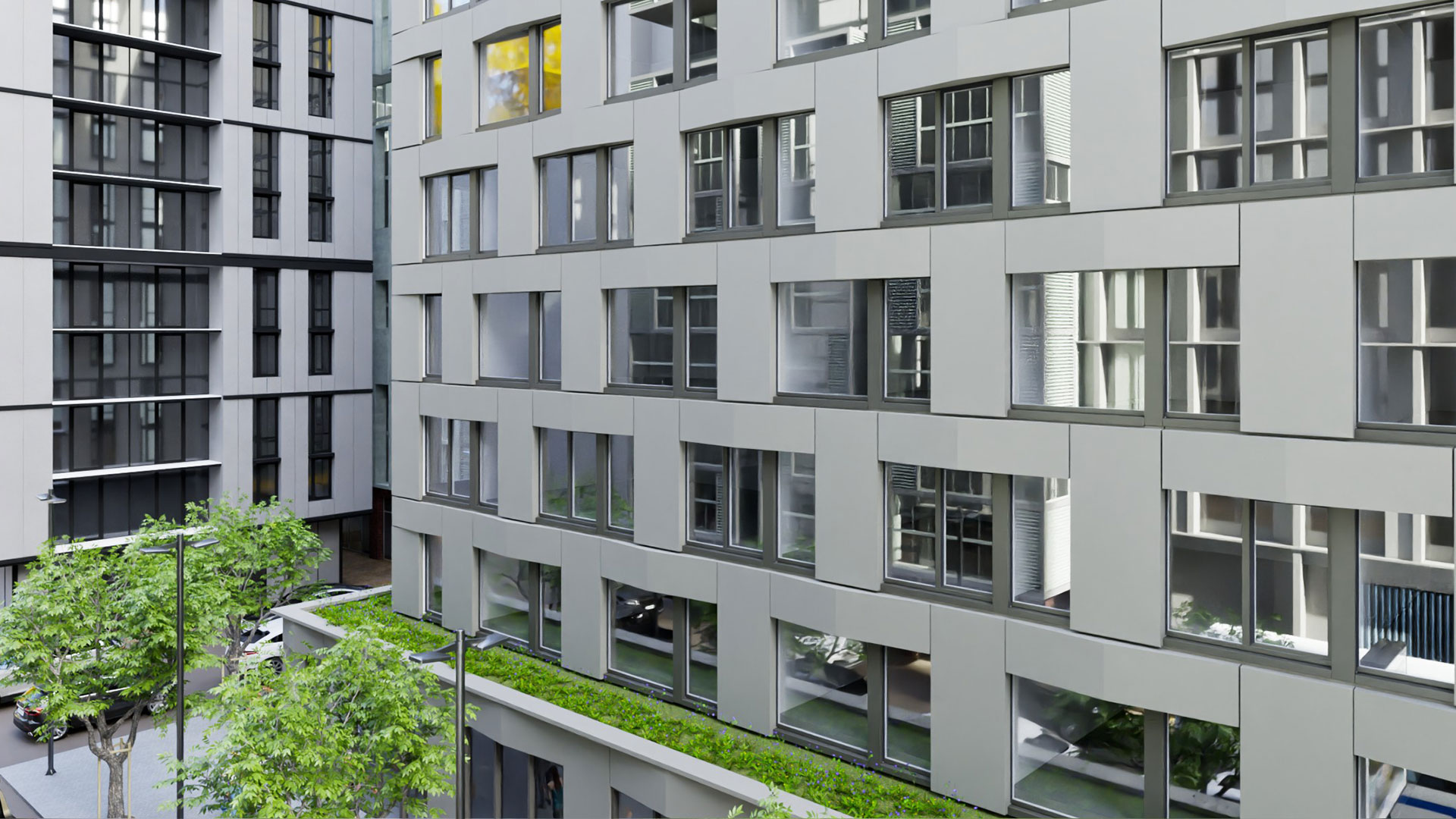
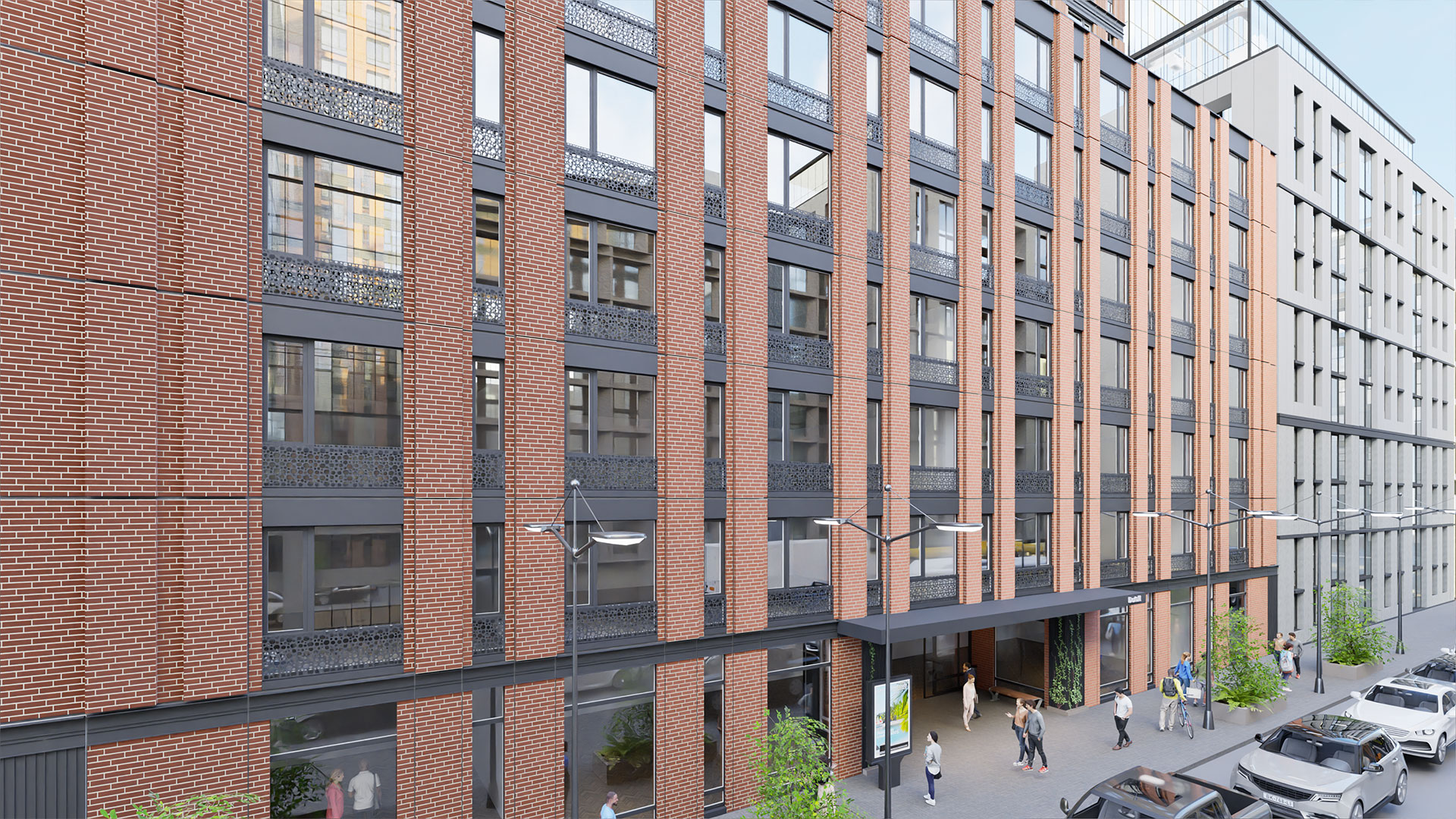
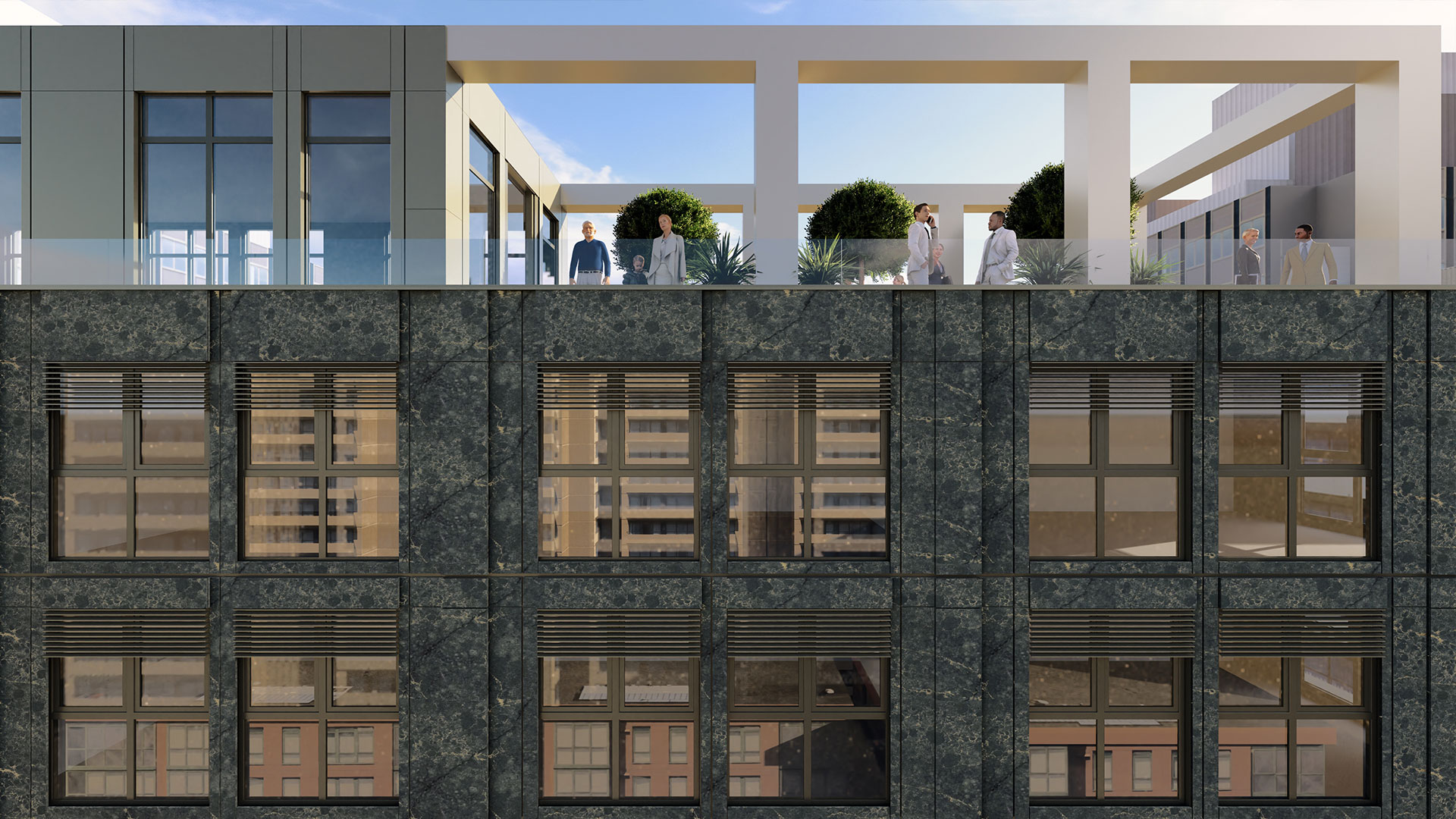
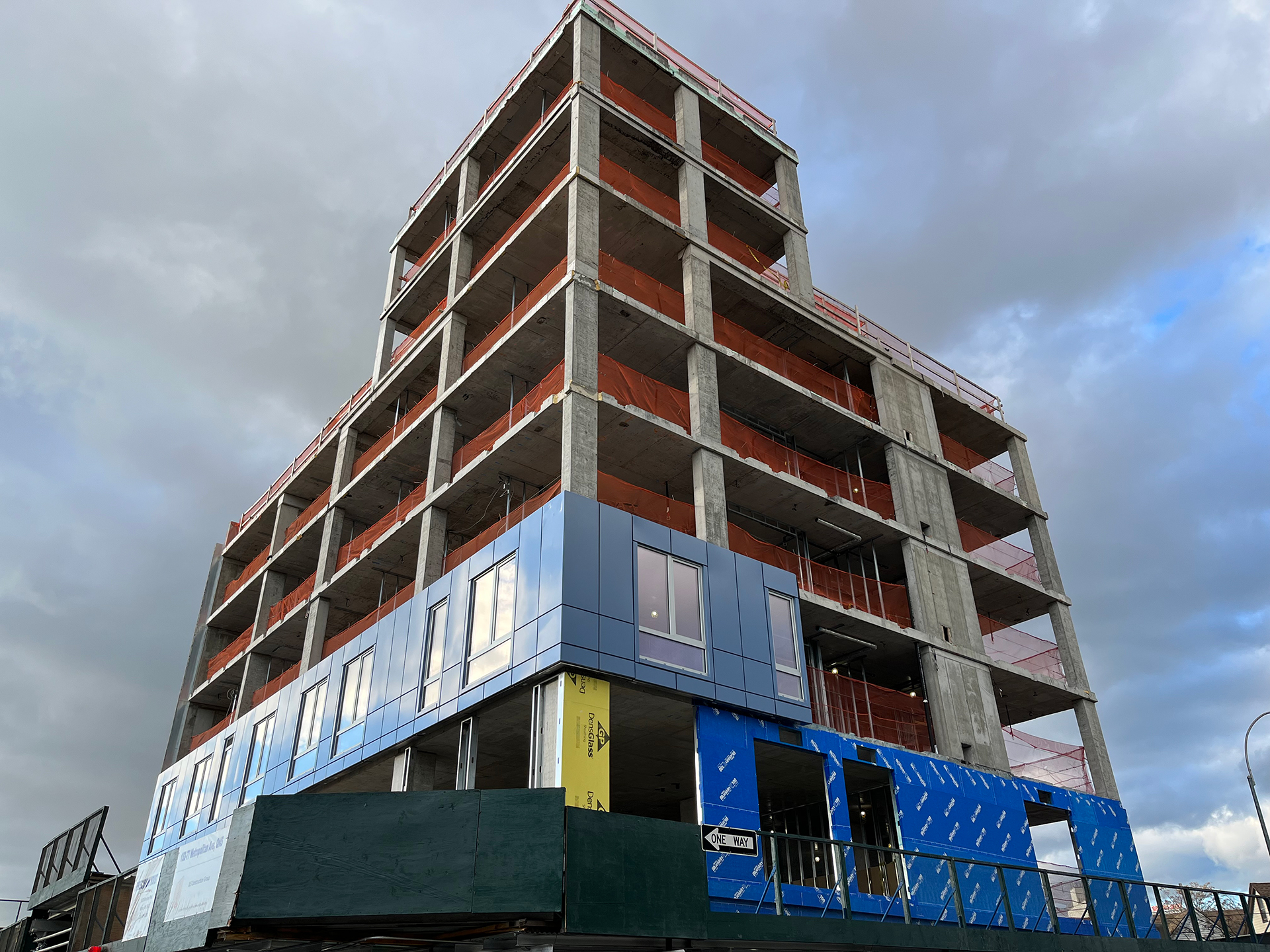
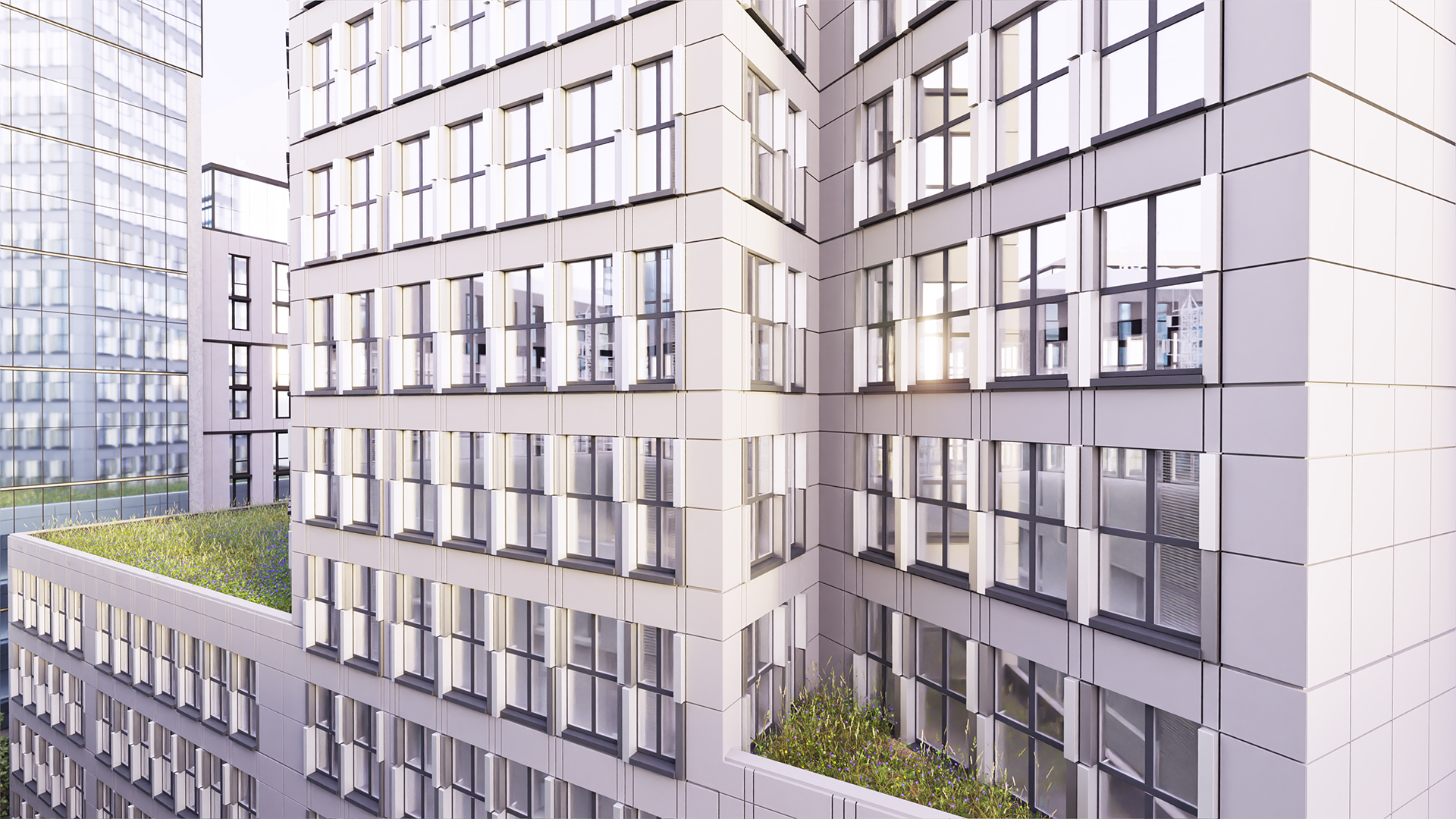






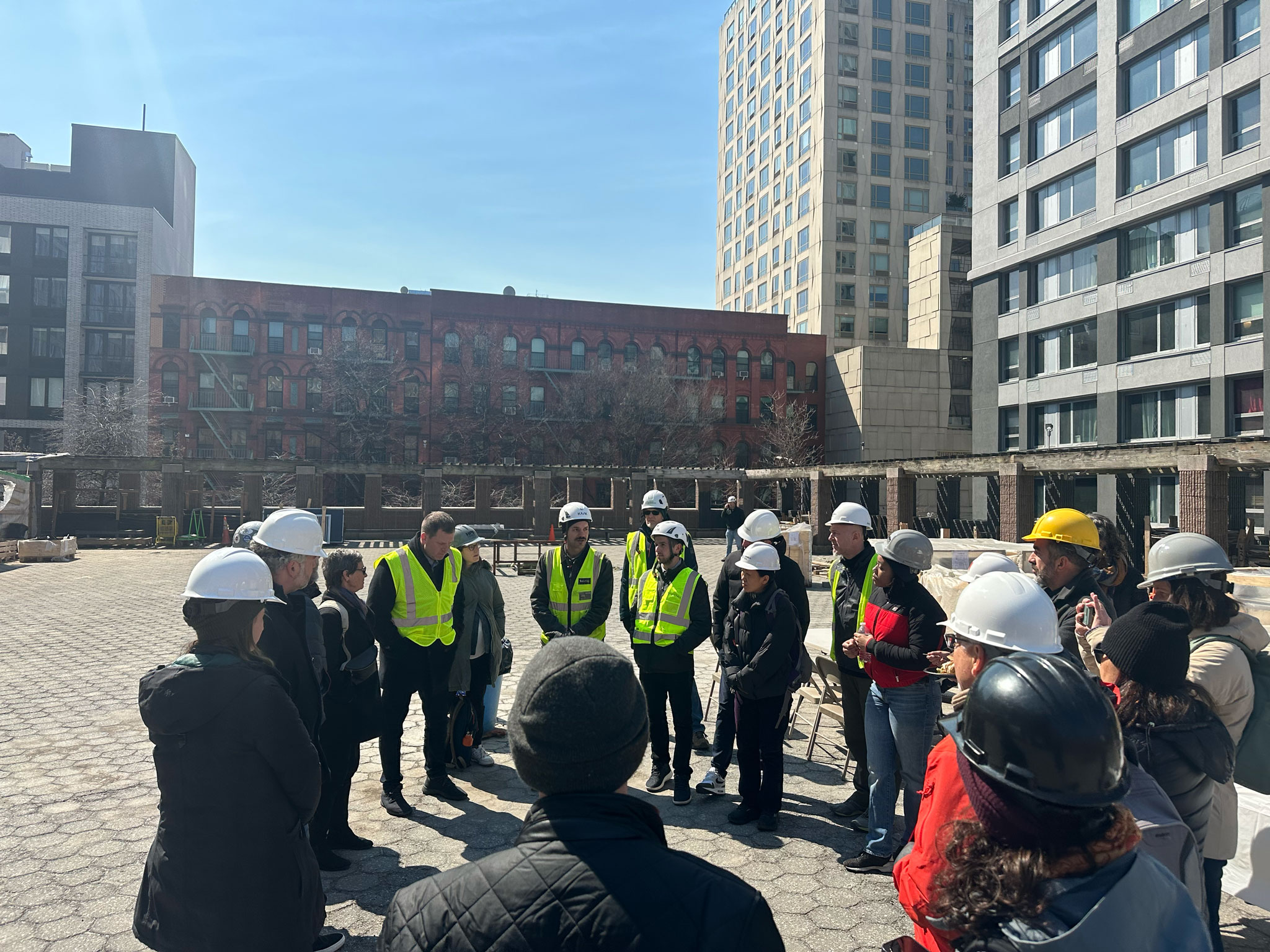



_format(webp).avif)
_format(webp)%20(6).avif)
_format(webp)%20(5).avif)
_format(webp)%20(4).avif)
_format(webp)%20(2).avif)
_format(webp)%20(3).avif)


.avif)
_format(webp)%20(2).avif)